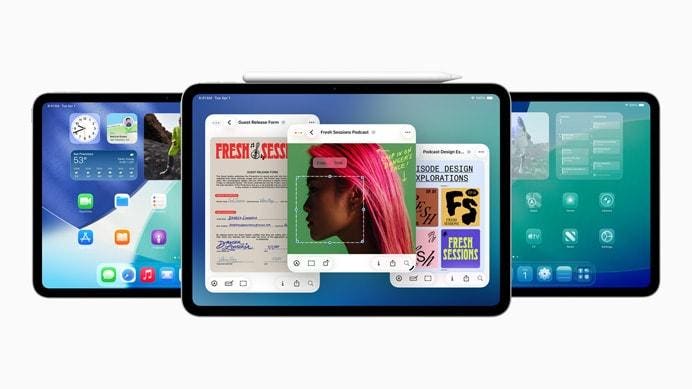Antara Dave is a Product Designer at Microsoft.
In today’s fast-paced digital landscape, where user expectations are constantly evolving and competition is only a click away, building successful products is no longer about guesswork or intuition—it’s about evidence.
That’s where A/B experimentation comes in: a powerful, data-driven methodology that helps product teams make better decisions, reduce risk and create experiences that work for users.
A/B testing, at its core, is the practice of comparing two or more variants of a product or feature, often called the “control” and the “treatment,” to measure which performs better based on a defined metric such as click-through rate, conversion rate or time on task. However, behind that simple definition lies a strategic approach that is reshaping how modern products are designed, refined and launched.
Why Experimentation Matters
Experimentation isn’t just a technical tactic—it’s a strategic imperative that empowers teams in three key ways.
1. Reducing Risk And Making Informed Decisions
In traditional product development, decisions are often made based on stakeholder opinions, past experiences or gut instinct. While experience and intuition are valuable, they can’t replace empirical evidence. A/B experimentation helps teams test their assumptions with real users in real environments before investing heavily in full-scale development or rollout.
Imagine a product team is redesigning a checkout flow to reduce cart abandonment. Instead of shipping a completely new flow to all users and hoping for the best, they can A/B test the redesigned version with a small percentage of users. If the data shows a statistically significant lift in conversion, the team has the confidence to roll it out broadly. If not, they can iterate further without losing users or revenue.
2. Understanding User Behavior
A/B testing doesn’t just tell you which version performs better—it helps uncover how users think and behave. What motivates them to click? Where do they drop off? What confuses them or adds friction? These insights can drive not just short-term wins but long-term product strategy.
For example, LinkedIn often runs A/B tests on copy changes in call-to-action buttons. A slight tweak from “Request Connection” to “Connect Now” might not seem like much, but data could show a measurable uptick in user engagement. These micro-optimizations compound over time to significantly enhance product usability.
3. Encouraging A Culture Of Experimentation
Perhaps the most transformative power of A/B testing is cultural. I’ve found that teams that embrace experimentation operate differently. They move from debating opinions to aligning around metrics. They become comfortable with failure because each failed test is a learning opportunity, not a setback.
Companies like Booking.com and Netflix are known for running thousands of experiments every year, testing everything from button placements to entire algorithms. This culture of continuous learning allows them to adapt rapidly, serve their users better and stay ahead of competitors.
How Companies Use A/B Testing Strategically
Many of the world’s most successful companies have turned experimentation into a core capability, using it to drive innovation at scale.
Amazon, for example, uses experimentation to fine-tune everything from product recommendations to delivery options. By testing variations in pricing strategies, promotional banners and checkout experiences, Amazon optimizes for revenue without sacrificing user trust or satisfaction.
Google famously ran 41 shades of blue in an A/B test to determine which color led to the highest click-through rates in ads. While that example is often cited as an extreme, it underscores the lengths to which data-centric organizations go to ensure their choices are informed.
Spotify uses A/B testing not just to improve its user interface (UI) but to refine algorithms for music discovery and playlist recommendations. Each small experiment contributes to a more personalized, engaging experience that keeps users coming back.
These examples demonstrate that experimentation is not limited to surface-level design. It is a strategic tool that spans product, engineering, marketing and even business model decisions.
Best Practices For Effective A/B Testing
While the concept is simple, running effective experiments requires rigor and discipline. Here are some best practices to follow:
1. Define clear metrics upfront.
Start with a well-articulated hypothesis. What problem are you solving? What behavior are you trying to influence? Choose primary and secondary success metrics that align with your goals, such as conversion rate, time spent or retention.
2. Ensure statistical significance.
Avoid drawing conclusions from small sample sizes or early trends. Use statistical methods to determine confidence intervals, p-values and the minimum detectable effect.
3. Segment thoughtfully.
User behavior can vary widely by geography, device or user segment (such as new versus returning users). Segmenting your results can reveal hidden patterns and help avoid overgeneralizing from one population to another.
4. Don’t over-test the obvious.
While testing button colors might bring quick wins, focus on high-impact areas such as onboarding flows, pricing models, recommendations or new features. Use experimentation to validate bold ideas and de-risk major investments.
5. Document and share learnings.
An underappreciated value of experimentation is the knowledge it creates. Maintain a repository of past experiments, what was tested, what the results were and what was learned. This institutional memory prevents teams from repeating mistakes and accelerates decision making.
Moving Beyond A/B: The Experimentation Mindset
A/B testing is just one method in the broader toolkit of experimentation. As products become more complex, especially with the rise of AI, teams are evolving toward multivariate testing, bandit algorithms and sequential testing. But at the heart of all these methods lies a simple principle: test, learn and iterate.
Moreover, experimentation doesn’t always need to be purely quantitative. Combining A/B tests with qualitative feedback like usability tests, surveys or customer interviews can give a fuller picture of why a variant is or isn’t working.
Build, Measure, Learn
The best products in the world didn’t arrive in their final form overnight. These products were shaped by cycles of iteration, informed by data and validated by real user behavior. A/B experimentation empowers teams to take that iterative journey with confidence, speed and clarity.
In a world where user attention is scarce, competition is fierce and innovation is constant, experimentation isn’t just a tool—it’s a necessity. By embedding A/B testing into the product development process, companies can avoid costly missteps, uncover surprising opportunities and, ultimately, build products that people truly love.
So, the next time you’re deciding between two features, two designs or two ideas, don’t guess—test.
Forbes Technology Council is an invitation-only community for world-class CIOs, CTOs and technology executives. Do I qualify?








